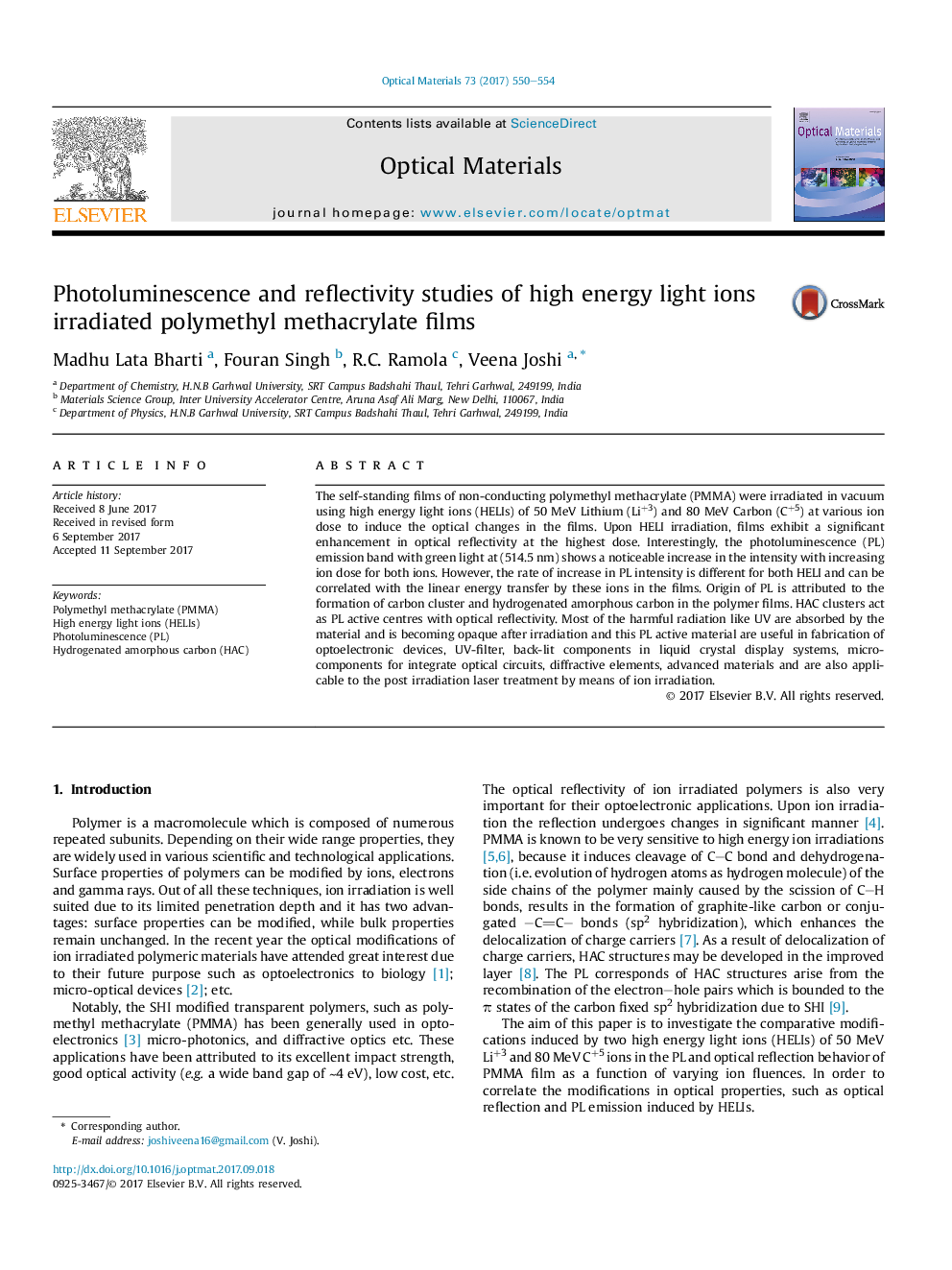| Article ID | Journal | Published Year | Pages | File Type |
|---|---|---|---|---|
| 5442402 | Optical Materials | 2017 | 5 Pages |
Abstract
The self-standing films of non-conducting polymethyl methacrylate (PMMA) were irradiated in vacuum using high energy light ions (HELIs) of 50Â MeV Lithium (Li+3) and 80Â MeV Carbon (C+5) at various ion dose to induce the optical changes in the films. Upon HELI irradiation, films exhibit a significant enhancement in optical reflectivity at the highest dose. Interestingly, the photoluminescence (PL) emission band with green light at (514.5Â nm) shows a noticeable increase in the intensity with increasing ion dose for both ions. However, the rate of increase in PL intensity is different for both HELI and can be correlated with the linear energy transfer by these ions in the films. Origin of PL is attributed to the formation of carbon cluster and hydrogenated amorphous carbon in the polymer films. HAC clusters act as PL active centres with optical reflectivity. Most of the harmful radiation like UV are absorbed by the material and is becoming opaque after irradiation and this PL active material are useful in fabrication of optoelectronic devices, UV-filter, back-lit components in liquid crystal display systems, micro-components for integrate optical circuits, diffractive elements, advanced materials and are also applicable to the post irradiation laser treatment by means of ion irradiation.
Related Topics
Physical Sciences and Engineering
Materials Science
Ceramics and Composites
Authors
Madhu Lata Bharti, Fouran Singh, R.C. Ramola, Veena Joshi,
